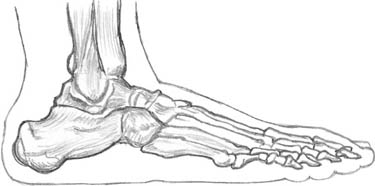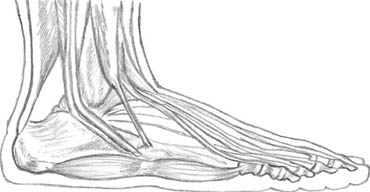Toes are less flexible than fingers, so feet are not as complicated to draw as hands. Because feet have a unique structure, however, it is still helpful to study the bones, muscles, and tendons to assist you in rendering accurate drawings. Practice drawing feet in various views, as shown here, to build your skills.

BACK VIEW OF FEET When viewed from behind, the heel and leg bone catch the light and become one large area. Very little of the front of the feet are visible from this angle.
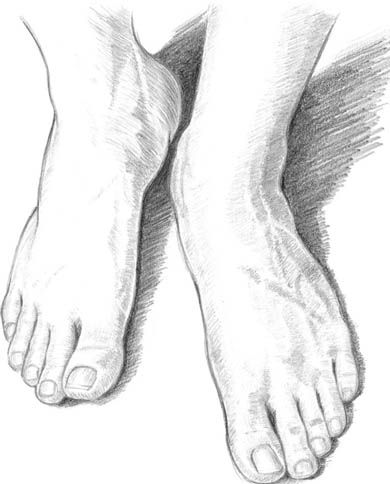
ADULT MALE FEET This man is lifting his right foot at an angle to take a step; it looks smaller than the other foot because it is farther away from the viewer. Notice how the raised foot catches the light, but the foot on the floor shows more intricate shading of light and dark areas.
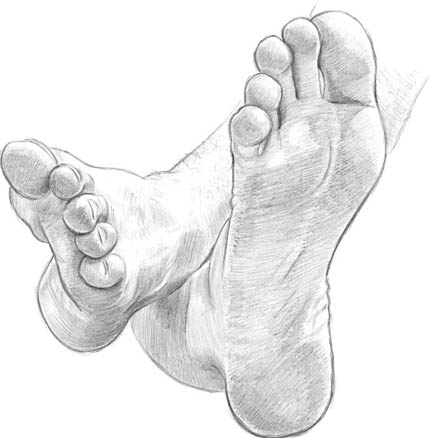
CROSSED FEET From our viewpoint in front of this man’s crossed feet, we see the entire bottom of his right foot. The left leg is crossed over the right and the foot is pointed at us, so there is severe foreshortening (see pages 10–11); the toes are just ovals when they are seen straight on like this.
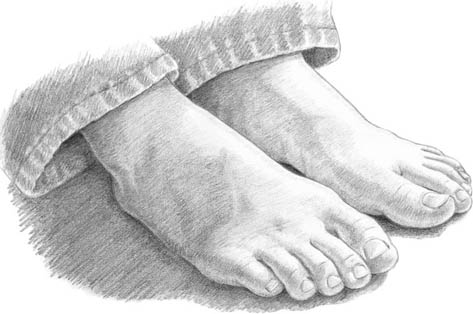
YOUNG FEMALE FEET The feet of this young girl are smooth on top because she is sitting with her feet extended in front of her. The strong lighting from above gives the tops of the feet bright highlights and casts dark shadows.
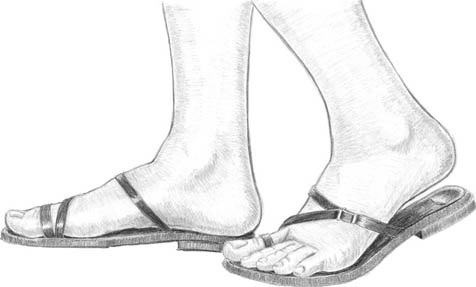
FEET IN PROFILE In this view of a woman walking, her right foot is a complete side view with only the big toe showing. Her left foot is bending at the toes and pointed slightly toward us, so we can see all the toes on that foot. Notice the difference between the shape of the foot when flat as opposed to when it is bent.


